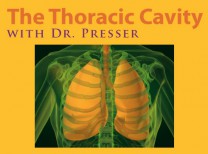Is weight lifting only for the young? Not at all! Even those 50 and older can enjoy weightlifting, especially lifting weights in slow-motion. Slow-motion strength training involves 10 seconds of lifting and a 10-second lowering phase. The exercise’s ultimate goal is to gain momentary muscle failure. Slow-motion strength training is an example of a brief “high-intensity” exercise. It has several health benefits, including stronger muscles and bones, weight loss, better function and balance, improved immune function, increased energy and increased cardiovascular health.
Use it or lose it — some startling statistics. At the age of 50, an individual loses 1–2 percent of their muscle strength every year. After 60, they lose about 3 percent of their muscle strength, approximately 4.5 pounds. Slow-motion strength training helps a person regain the muscle strength they have lost and helps their cells remain younger because exercise slows cell aging1. At the same time, strength training is essential for individuals above 50 because it fights age-related muscle loss, improves an individual’s mobility, reduces bone loss, and helps fight depression and cognitive decline.
Big benefits, less time commitment. Slow-motion strength training strengthens muscles more efficiently by recruiting all the muscle fibers within the targeted muscle and only takes 20 minutes two times per week. As an individual slowly lifts, the lifting speed reduces momentum and instantly activates the muscles on each repetition. As a result, an individual uses more (deeper) muscle fibers to strengthen the muscles, and by slowing down the lifting phase, they reduce the chance of injury, making these extremely safe for those 50 and older. Also, the body best responds to short, brief and intense strength training exercises and needs ample time to rest, recover and grow in between sessions. Anything beyond that can hamper results, which is why doing slow-motion strength training two times a week is all you need.
Your heart will love you. Slow-motion strength training also improves weight loss and cardiovascular health. When an individual exercises, they increase blood flow, resulting in stimulation of the capillaries, making them expand. This expansion creates room for more oxygen to enter the bloodstream, causing the heart to be more effective in removing toxins and waste from the body2. Other cardiovascular health benefits of strength training include lower blood pressure, lower bad cholesterol and increased insulin sensitivity.
Staying fit helps reduce chronic diseases. Slow-motion strength training helps older adults stay fit and adopt a healthy lifestyle. Staying fit means that the individual is able to reduce symptoms associated with chronic diseases such as obesity, diabetes and heart diseases1. The Centers for Disease Control and Prevention (CDC) recommends individuals engage in 150 minutes of exercise every week, including cardio exercises as well as bodyweight exercises.
In conclusion, slow-motion strength training offers many health benefits and helps seniors maintain their independence.
Arnel Sator is a kinesiologist, exercise physiologist and founder of PerfectlyFit in Indian Wells. He can be reached at (760) 408.2720. For more information visit www.PerfectlyFit.me.
References:
1) Dellitt, J. (2018, January 20). 5 Key Strength Training Tips for Older Adults. Aaptiv. https://aaptiv.com/magazine/strength-training-for-older-adults-tips;
2) Quillen, A. (2016, May 19). Slow Down Your Workout! PartSelect.com. https://www.fix.com/blog/slow-movement-workout/;



















































Comments (0)